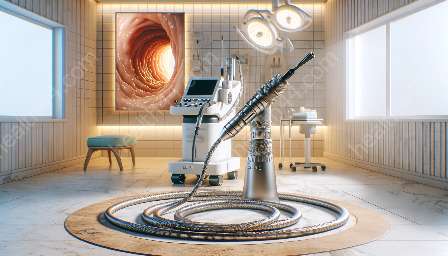Endoscopic stents play a crucial role in modern medicine, offering minimally invasive solutions for a wide range of conditions. These innovative devices are designed to work seamlessly with endoscopes, providing medical professionals with advanced tools for managing various medical conditions. In this comprehensive guide, we will delve into the world of endoscopic stents, exploring their applications, benefits, and the impact they have on the field of medicine. Additionally, we will discuss their compatibility with medical devices & equipment, shedding light on how these technologies work together to improve patient outcomes.
The Evolution of Endoscopic Stents
Endoscopic stents have come a long way since their inception, with continuous advancements in design and functionality. Initially introduced for the treatment of gastrointestinal obstructions, stents are now used in various medical specialties, including gastroenterology, pulmonology, urology, and gynecology. Their versatility has expanded their utility to address strictures, fistulas, and other abnormalities in different anatomical structures.
How Endoscopic Stents Work
Endoscopic stents are typically introduced into the body through an endoscope, a thin, flexible tool equipped with a camera and light source. The stents come in various shapes and sizes to accommodate different anatomical sites and conditions. These devices are placed within the body to provide structural support, relieve obstructions, and facilitate the flow of fluids or gases, depending on the specific clinical need.
Benefits of Endoscopic Stents
The use of endoscopic stents offers several advantages for both patients and healthcare providers. One of the key benefits is the minimally invasive nature of the procedures involving stent placement, which reduces the risks associated with open surgery and promotes faster recovery. Additionally, stents can effectively alleviate symptoms such as pain, dysphagia, and respiratory distress, improving the quality of life for patients with various medical conditions.
Guiding Compatibility with Endoscopes
Endoscopic stents are designed to be compatible with endoscopes, allowing for precise deployment and positioning within the body. This compatibility ensures that the stents can be accurately placed in the target location, maximizing their effectiveness in addressing the underlying medical issues. The integration of stents with endoscopes also enables real-time visualization, providing healthcare providers with valuable insights during the placement process.
Integration with Medical Devices & Equipment
The seamless integration of endoscopic stents with other medical devices & equipment is critical in ensuring the success of interventional procedures. From imaging technologies to navigation systems, endoscopic stents work in tandem with various medical tools to optimize the delivery of care. This integrated approach harnesses the power of advanced medical technologies, resulting in improved outcomes and enhanced patient safety.
Future Innovations in Endoscopic Stents
As technology continues to progress, the future of endoscopic stents looks promising. Ongoing research and development efforts are focused on enhancing stent materials, refining deployment techniques, and expanding the scope of conditions that can be effectively managed with stent therapy. These innovations are poised to further revolutionize minimally invasive interventions and improve the overall standard of care for patients.


